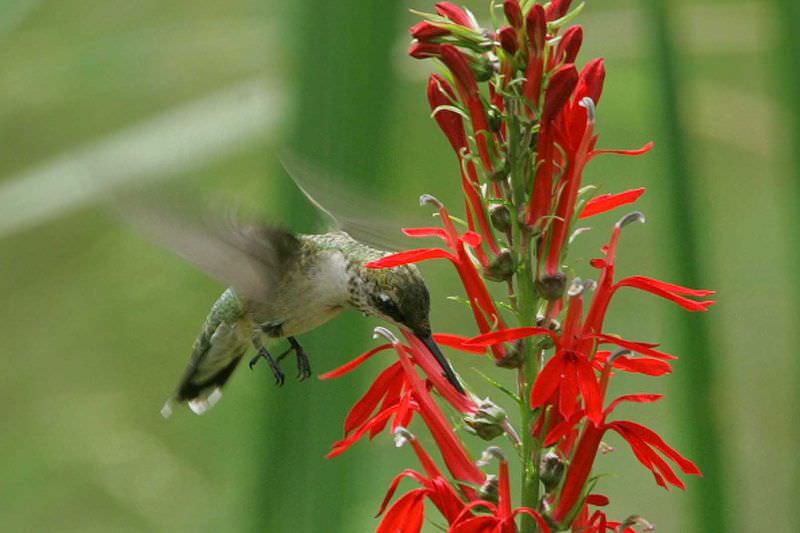1.7: Types of Biochemical Reactions
- Page ID
- 8340

What do you get when you cross biology and chemistry?
Hummingbirds, with their tiny bodies and high levels of activity, have the highest metabolic rates of any animals — roughly a dozen times that of a pigeon and a hundred times that of an elephant. The metabolic rate, or rate of metabolism, has to do with the amount of energy the organism uses. And that energy is used to drive the chemical reactions in cells — or the biochemical reactions. And, of course, it is all the biochemical reactions that allow the cells function properly, and maintain life.
Biochemical Reactions
Biochemical reactions are chemical reactions that take place inside the cells of living things. The field of biochemistry demonstrates that knowledge of chemistry as well as biology is needed to understand fully the life processes of organisms at the level of the cell. The sum of all the biochemical reactions in an organism is called metabolism. It includes both exothermic and endothermic reactions.
Types of Biochemical Reactions
Exothermic reactions in organisms are called catabolic reactions. These reactions break down molecules into smaller units and release energy. An example of a catabolic reaction is the breakdown of glucose, which releases energy that cells need to carry out life processes. Endothermic reactions in organisms are called anabolic reactions. These reactions build up bigger molecules from smaller ones. An example of an anabolic reaction is the joining of amino acids to form a protein. Which type of reactions—catabolic or anabolic—do you think occur when your body digests food?
Summary
- Biochemical reactions are chemical reactions that take place inside the cells of organisms.
Review
- What are biochemical reactions?
- What is metabolism?
- Describe catabolic reactions?
- What is an example of a biochemical reaction?
| Image | Reference | Attributions |
 |
[Figure 1] | License: CC BY-NC |

